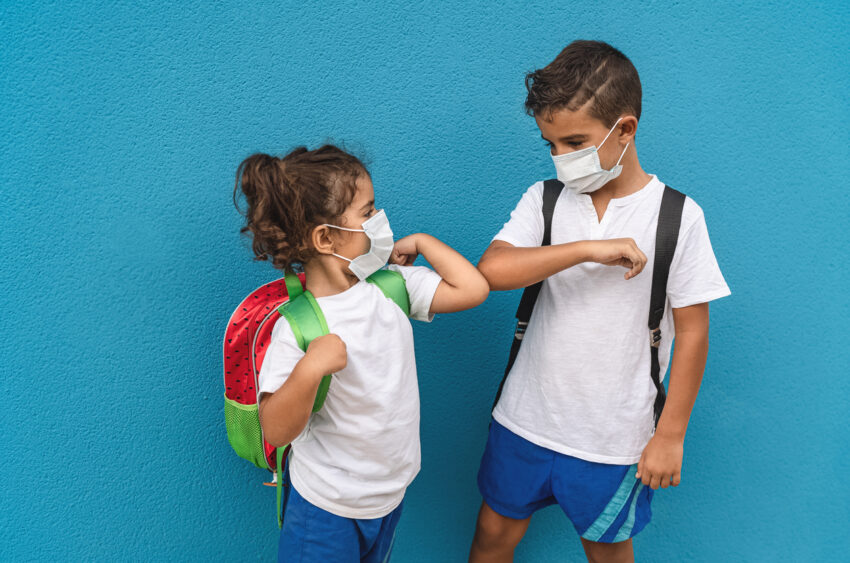
Share On Social!
Latino students face many systemic barriers to quality education, including a lack of access to preschool and little diversity among teachers.
Worse, recent research from the University of Chicago found that the number of low-income Latino children attending schools with middle-class students has fallen by 14% in 15 years. It’s a marker of an underlying issue – racial/ethnic segregation.
In fact, researchers found another uptick in white families moving out of diverse, both racially and socioeconomically, areas to white-majority areas, or white flight.
The COVID-19 pandemic adds another layer of complexity to white flight and segregation in education, according to Bruce Fuller, a Berkeley sociology professor and study leader.
“Deeper forces have sustained achievement disparities in recent decades, especially this worsening isolation of the poor from middle-class students,” Fuller told The 74. “COVID-era learning loss is but a surface symptom of deeper ills that beset public education.”
The Study and Its Findings on Segregation
Despite the rapid growth of Latinos and Latino students throughout the US, these learners are not receiving the care or the consideration that their white, middle-class peers receive.
“We find that Latino children attended increasingly segregated schools, racially defined, hosting declining percentages of White peers between 2000 and 2015,” authors write. “This stems in part from districts enrolling growing shares of Latino children without a corresponding rise in White enrollment.
“Perhaps most worrisome, intensifying racial isolation is associated with declining interaction between poor with nonpoor children, which we know exacerbates persisting achievement gaps.”
These researchers, from the University of California, Berkeley, and the University of Maryland, discovered—through an analysis of over 14,000 districts nationwide—that “in 2000, the average child from a poor family went to an elementary school where almost half of the students were defined as middle class.”
Just 15 years later, that number sat at 36%. 
The segregation of low-income Latino children in separate schools, distant from middle-class or racially diverse peers, reinforces disparities in children’s achievement, the study authors write.
Not only does this impact students personally, it impacts the financial stability of schools, according to Feliza Oritz-Licon, chief policy and advocacy officer at Latinos for Education, a nonprofit focusing on teacher recruitment and education policy.
“‘White flight’ from the public school system translates into resource flight from racially isolated schools,” she told The 74.
The researchers point to many factors impacting this reality, two of which include:
- Backlash to busing “slowed desegregation efforts” in districts with large Black student populations and shifted attention toward improving schools in Black and Latino communities, the authors said.
- Now higher birth rates among Latinos, combined with the movement of Latino families to the suburbs, have contributed to racial isolation, they wrote.
The State of Latino Education
Racial/ethnic disparities in education are not new.
Latino children often start developmentally behind their peers, according to a Salud America! research review.
Reasons mentioned earlier include living in child care deserts, language issues and immigrant status, unengaged parents, childhood trauma, discipline, segregated school districts, and a lack of state funding in districts with lots of students of color.
Now COVID-19 is worsening many of these inequities.
Latino students are now 200% more likely to forgo college plans than their white peers, according to Inside Higher Education.
“The Free Application for Federal Student Aid (FAFSA), which millions of students fill out each year for college aid, reports about 7% fewer high school applicants compared to last year,” Anne Dennon with Best Colleges writes. “Among schools with a Black and Latino/a student enrollment of 75% or higher, 18% fewer students have submitted the FAFSA. In total, FAFSA applications from high school students are down 10%.”
Worse, teachers of color—an already underrepresented group—are retiring at higher rates than their white peers, according to new research from The National Education Association.
Their poll found that 59% of Latino educators were planning on retiring earlier than they expected. This is a worrying statistic as we know that representation in the classroom can better student of color’s education outcomes.
Moreover, Latino parents have become less able to take on debt during COVID-19.
 This is contributing to the decline in their children becoming college students, according to a recent Public Viewpoint survey.
This is contributing to the decline in their children becoming college students, according to a recent Public Viewpoint survey.
The survey found that:
- 35% of Americans have canceled or changed their education plans, including delaying enrollment, reducing courses, or switching institutions.
- Of the students that were likely to have canceled or delayed their plans:
- 32% were Latino
- 24% were Black
- 21% were Asian American
- 16% were white
“To support a highly educated workforce, develop future leaders, and build a more inclusive democracy and economy, we must ensure Latino students thrive,” U.S. Sen. Alex Padilla said in a recent press release.
What You Can Do for Latino Access to Quality Education
In their recent report, America’s Promise Alliance and Research for Action recommend the following steps to help high schoolers:
- Address student mental health, now and on an ongoing basis.
- Teach a comprehensive and accurate history of race and racism in the United States.
- Prioritize postsecondary success through relevant content and pathways planning.
- Saturate young people’s environments with caring adult relationships.
We can also do our part to help Latino teenagers with mental health issues.
Eliminating the stigma against mental illness can be the first step.
“People tend to associate mental health with cosa de locos, I’m crazy, or there’s something wrong with me. It’s so important to normalize the experience,” said Dr. Luz Garcini, psychologist and epidemiologist at UT Health San Antonio.
Having more bilingual and culturally relevant mental health resources is also important. These bilingual materials from National Institute of Mental Health (NIMH) can help Latinos learn about mental health treatment.
We can also help children who witness traumatic events, like domestic violence or murder.
These kids still have to go to class or carry on while school is out for summer or due to the pandemic. They face a burden of stress and trauma that can interfere with their behavior and grades—and schools often aren’t even aware there’s an issue.
Download the free Salud America! “Handle With Care Action Pack.”
The Action Pack helps police, school, and mental healthcare leaders start the Handle with Care program, in which police notify schools when they encounter children at a traumatic scene, so schools can provide support right away. They can virtually support kids if school is out for summer or still closed due to COVID-19.
Explore More:
EducationBy The Numbers
142
Percent
Expected rise in Latino cancer cases in coming years



